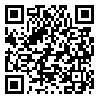دوره 4، شماره 2 - ( 4-1399 )
جلد 4 شماره 2 صفحات 137-127 |
برگشت به فهرست نسخه ها
Download citation:
BibTeX | RIS | EndNote | Medlars | ProCite | Reference Manager | RefWorks
Send citation to:



BibTeX | RIS | EndNote | Medlars | ProCite | Reference Manager | RefWorks
Send citation to:
Ahadinezhad B, Khosravizadeh O, Baghian N, Mohtashamzadeh B, Shahsavari S. Are Price, Income, and Education Expenditure Important in the Iranian households' Demand of Healthcare Services: 2011 to 2017?. EBHPME 2020; 4 (2) :127-137
URL: http://jebhpme.ssu.ac.ir/article-1-263-fa.html
URL: http://jebhpme.ssu.ac.ir/article-1-263-fa.html
Are Price, Income, and Education Expenditure Important in the Iranian households' Demand of Healthcare Services: 2011 to 2017?. 1. 1399; 4 (2) :127-137
چکیده: (3046 مشاهده)
Background: In health economics, policymakers need to be aware of the individuals' sensitivity and reaction to change effective factors on the healthcare services demand. This study aimed to estimate the healthcare demand function and extract the price, income, and educational elasticity in Iran.
Methods: A panel of macro data was used to estimate the demand function. The data included provincial average of the nominal values of Iranian household healthcare and education expenditure, provincial average of their nominal income, and Consumer Price Index values of the healthcare services from 31 provinces during 7 years (2011 to 2017). This information was obtained from the annual Household Budget Survey Reports and no sampling was performed in this research. The dependent variable was the actual amount of demand for health care services. Robust pre-estimation tests and a robust standard error panel regression were run to estimate the demand function in Stata 15.
Results: All variables were stationary at the first-order differential (P-value < 0.01). All four variables were co-integrated (P-value < 0.01). The cross-sectional and fixed effects existed for each province (P-value < 0.01). Income and educational expenditure had a positive association with healthcare demand. Price elasticity of demand was -0.897 (P-value < 0.01), income elasticity was 0.491 (P-value < 0.1), and elasticity of education expenditure was 0.486 (P-value < 0.01). Noteworthy, 1 % increase was observed in the household incomes and their educational expenditure increased the demand for health care services by about 0.49 % and 0.48 %, respectively.
Conclusion: Healthcare services have been low elastic to price and education expenditure and have also been the essential commodity in the household budget in Iranian households. Later, the price and income coefficients were consistent with the health investment model, but coefficient of the education expenditure was not matched with predictions of the health investment model.
Methods: A panel of macro data was used to estimate the demand function. The data included provincial average of the nominal values of Iranian household healthcare and education expenditure, provincial average of their nominal income, and Consumer Price Index values of the healthcare services from 31 provinces during 7 years (2011 to 2017). This information was obtained from the annual Household Budget Survey Reports and no sampling was performed in this research. The dependent variable was the actual amount of demand for health care services. Robust pre-estimation tests and a robust standard error panel regression were run to estimate the demand function in Stata 15.
Results: All variables were stationary at the first-order differential (P-value < 0.01). All four variables were co-integrated (P-value < 0.01). The cross-sectional and fixed effects existed for each province (P-value < 0.01). Income and educational expenditure had a positive association with healthcare demand. Price elasticity of demand was -0.897 (P-value < 0.01), income elasticity was 0.491 (P-value < 0.1), and elasticity of education expenditure was 0.486 (P-value < 0.01). Noteworthy, 1 % increase was observed in the household incomes and their educational expenditure increased the demand for health care services by about 0.49 % and 0.48 %, respectively.
Conclusion: Healthcare services have been low elastic to price and education expenditure and have also been the essential commodity in the household budget in Iranian households. Later, the price and income coefficients were consistent with the health investment model, but coefficient of the education expenditure was not matched with predictions of the health investment model.
نوع مطالعه: پژوهشي |
دریافت: 1398/8/23 | پذیرش: 1399/4/14 | انتشار: 1399/4/14
دریافت: 1398/8/23 | پذیرش: 1399/4/14 | انتشار: 1399/4/14
| بازنشر اطلاعات | |
 |
این مقاله تحت شرایط Creative Commons Attribution-NonCommercial 4.0 International License قابل بازنشر است. |




